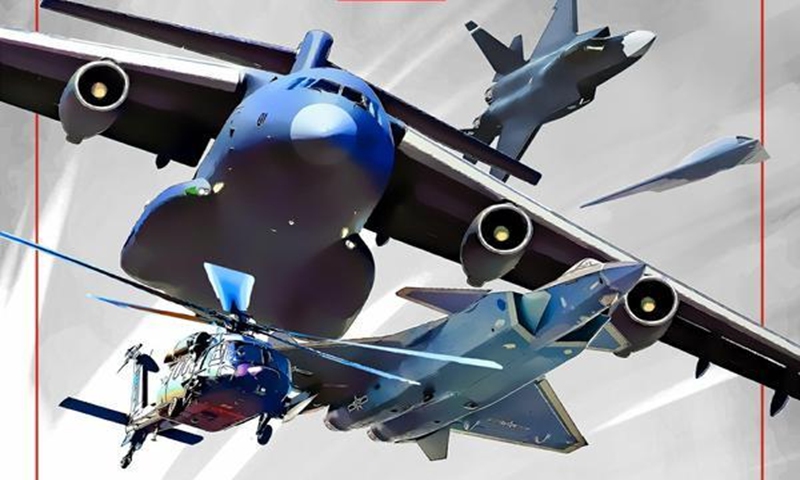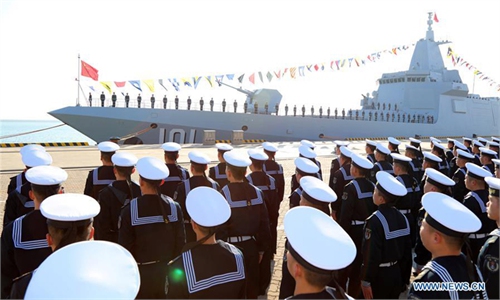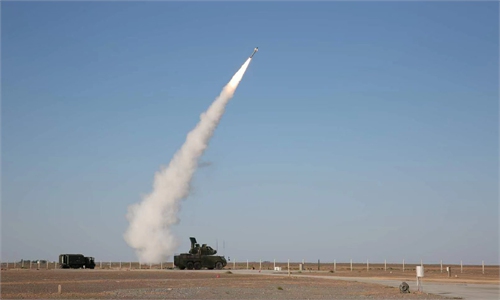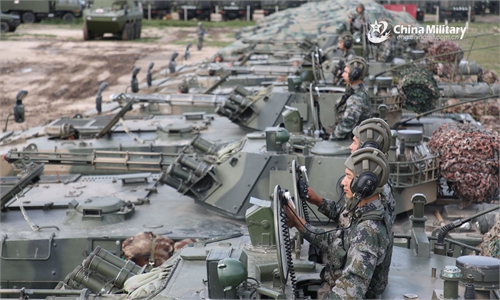
The J-20 stealth fighter jet, Y-20 large transport plane, Z-20 utility helicopter, FC-31 stealth fighter jet and GJ-11 stealth armed reconnaissance drone feature in the poster for AVIC's 2021 work conference. Photo: Screenshot from AVIC's Sina Weibo account
A Chinese lawmaker has proposed at the ongoing two sessions that the country should further open up the industry chains for military aircraft development to private companies. Chinese analysts said on Tuesday that such a move could harness the strengths of the entire Chinese society and accelerate the development of new warplanes, at a time when the US is stirring up an arms race on making sixth-generation fighter jets.
Yang Yi, a deputy to the National People's Congress (NPC), China's top legislature, said in her proposal that the industrial chain for aviation equipment is very long, and it could take 10 to 15 years to develop and produce a new product from scratch, China Aviation News reported on Saturday.
To accelerate the process, China has set up weain.mil.cn, a website used by the Chinese military for public procurement of weapons and equipment. However, due to limitations such as confidentiality in military equipment development, differences in military and civilian scientific research mechanisms, and undefined policies in the development of the industrial chain, only a few institutes use this website, said Yang, who is also a top technical expert at state-owned Aviation Industry Corp of China (AVIC).
This means that many private Chinese companies looking for business opportunities in the military market have been unable to participate in warplane development, although they have qualified and much-needed resources, technologies, personnel and innovative minds, analysts said.
That is why China should establish an open scientific innovation system that is attractive to more high-quality domestic participants, so that the country can seize the technological high ground via long-term strategic investment, and realize the high-quality development of aviation, weapons and equipment, Yang said.
The NPC deputy's proposal is timely and points to room for improvement in the Chinese aviation industry, Wang Ya'nan, chief editor of Beijing-based Aerospace Knowledge magazine, told the Global Times on Tuesday.
The Chinese military aviation industry consists of largely state-owned participants, and this has failed to rally the resources of the whole society. Using those resources could boost innovation, lower the costs of development and production, and increase efficiency in developing new aircraft, Wang said.
Participating in warplane development can also allow private companies to further grow, and innovative technologies used in the process could later be used in ordinary people's lives, Wang said.
US Air Combat Command head General Mark Kelly said last month that the US is developing a sixth-generation fighter jet, but its progress could trail China's, US media outlet Defense News reported on February 26.
Wang said that the US is stirring up an arms race over new warplanes, but the concept of the sixth-generation fighter jet has still not been determined around the world.
China's sixth-generation fighter jet is expected to come into being by 2035, media reported in early 2020, citing Wang Haifeng, a chief architect at the AVIC Chengdu Aircraft Research and Design Institute.




